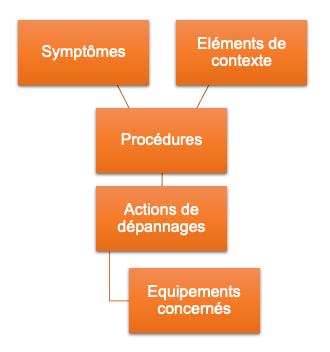
Troubleshooting, or troubleshooting, is a troubleshooting process based on the logical and systematic identification and resolution of problems based on identified symptoms. This process is formalized in procedures that identify the root causes of a malfunction by progressively eliminating known causes. Today these procedures are created during the design of the systems concerned. These systems can have lifespans of several decades, and it is understandably complicated to anticipate the root causes of future breakdowns at such long horizons.

Learn more about the TEEXMA methodology,
do not hesitate to contact us:
Request a demonstration by our technical team :